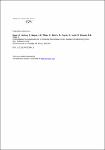Cytomegalovirus expresses the chemokine homologue vXCL1 capable of attracting XCR1+CD4- dendritic cells
Geyer, Henriette
Hartung, Evelyn
Mages, Hans Werner
Weise, Christoph
Belužić, Robert
Vugrek, Oliver
Jonjić, Stipan
Kroczek, Richard
Voigt, Sebastian
Cytomegaloviruses (CMV) have developed various strategies to escape the immune system of the host. One strategy involves the expression of virus-encoded chemokines to modulate the host chemokine network. We have identified in the English isolate of rat CMV (murid herpesvirus 8; MuHV8) an open reading frame encoding a protein homologous to the chemokine XCL1, the only known C-chemokine. Viral XCL1 (vXCL1), a glycosylated protein of 96 amino acids, can be detected 13 hours post infection in the supernatant of MuHV8-infected rat embryo fibroblasts. vXCL1 exclusively binds to CD4- rat dendritic cells (DC), a DC subset that expresses the corresponding chemokine-receptor XCR1. Like endogenous rat XCL1, vXCL1 selectively chemoattracts XCR1+ CD4- DC. Since XCR1+ DC in mice and humans have been shown to excel in antigen cross-presentation and thus in the induction of cytotoxic CD8+ T lymphocytes, the virus has apparently hijacked this gene to subvert cytotoxic immune responses. The biology of vXCL1 offers an interesting opportunity to study the role of XCL1 and XCR1+ DC in the cross-presentation of viral antigens.
Dateien zu dieser Publikation
Keine Lizenzangabe

